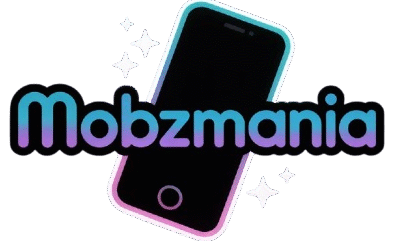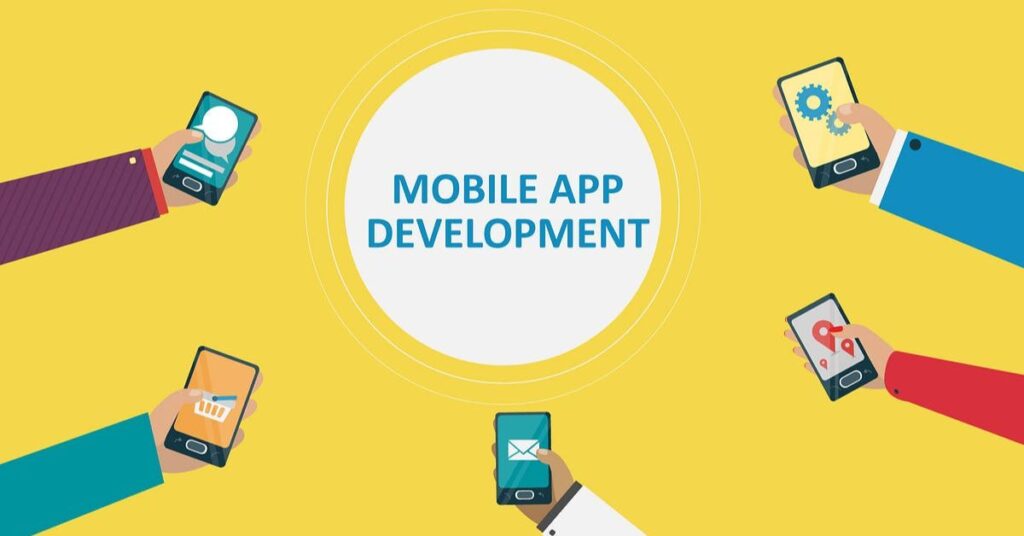In a world where smartphones dominate communication, shopping, and entertainment, mobile app development has become one of the most valuable skills in the digital age. Every tap, scroll, and notification you receive results from the creative and technical efforts of app developers. Whether it’s ordering food, managing finances, or connecting on social media, mobile applications are shaping how people interact with businesses. For entrepreneurs and organizations in the United States, understanding how apps are built isn’t just optional—it’s crucial for staying competitive. In this complete guide to mobile app development, we’ll explore the entire process, popular frameworks, and the advantages of different types of mobile applications.
The global app economy continues to grow at an impressive rate. Reports show that Americans spend nearly 90% of their mobile time using apps instead of browsers. This highlights how essential mobile presence is for modern businesses. By the end of this article, you’ll understand the key steps of mobile app creation, from ideation to deployment, and even learn how platforms like Buildfire make it easier than ever to bring your idea to life
What Is Mobile App Development?
In A Complete Guide to Mobile App Development, the process begins with designing, coding, and deploying software that runs seamlessly on smartphones and tablets. It’s far more than just writing code — it’s about creating an experience that feels natural to users. Developers build apps for platforms like Android and iOS, integrate databases, and ensure that each function performs smoothly across various devices. Unlike traditional web development, mobile app creation must account for hardware capabilities, screen sizes, and user behavior, making it a more complex but rewarding process.
Most modern applications use programming languages such as Swift, Kotlin, Dart, or JavaScript. The right choice depends on the audience, app type, and performance goals. For example, gaming apps require high-speed graphics and processing, while e-commerce platforms prioritize secure payments and intuitive navigation. Businesses that truly understand why mobile app development matters are able to create apps that not only attract users but keep them engaged for the long term — turning downloads into loyal communities.
Mobile App Development Process
Developing a successful mobile app involves several structured steps. Each stage plays a crucial role in transforming an idea into a functional and user-friendly product. The mobile app development process includes ideation, strategy, design, coding, testing, and ongoing maintenance.
Refine The Idea And Strategize
Every app begins with an idea—but turning that idea into a working product requires planning. Developers must define the app’s purpose, target users, and core functionality. A well-thought-out strategy ensures your app solves a real-world problem and offers a reason for users to download it. Successful organizations in the U.S. often start with minimum viable products (MVPs) to test their ideas before full-scale development.
Market Research
The next step is market research, which helps you understand competitors, target demographics, and market trends. This data determines whether your idea fills an existing gap or needs refinement. Tools like Google Trends, App Annie, and Sensor Tower are widely used for analyzing app performance in the U.S. market. Conducting surveys and interviews also helps validate your app concept before investing heavily in development.
Build Your UX Design
A successful app relies on an intuitive user experience (UX) design. Designers create wireframes and prototypes to visualize navigation flow and ensure the interface is easy to use. In the U.S., users expect clean layouts, fast loading times, and seamless interaction between pages. Studies show that nearly 70% of users abandon apps due to poor UX design, making this stage critical for long-term success.
App Development
Once the design is approved, developers start writing the actual code. This involves front-end development for user interfaces and back-end development for databases and servers. Teams use frameworks like Flutter or React Native to speed up the process while maintaining high-quality performance. For businesses that prefer a simplified approach, you can start building an app for free with Buildfire’s 30-day trial, which provides customizable templates and drag-and-drop tools to streamline development.
Testing
Testing ensures that the app functions as expected on different devices and under various conditions. QA teams check for bugs, crashes, security issues, and usability problems. Performance testing ensures that the app remains stable even during heavy usage. In 2024, a San Francisco-based startup found that extensive pre-launch testing reduced user complaints by 48% within the first three months after launch.
What Are The Best Mobile App Development Platforms?
Choosing the right development platform can make or break your app project. Below is a quick overview of the most popular tools used in the United States and worldwide.
| Platform | Key Features | Ideal Use Case |
| BuildFire | Drag-and-drop interface, no coding required | Entrepreneurs and small businesses |
| Flutter | Single codebase for iOS and Android | Cross-platform app development |
| Microsoft Xamarin | Integration with Microsoft ecosystem | Enterprise-grade apps |
| Adobe PhoneGap | Web-based coding for mobile apps | Hybrid app development |
Each platform has its advantages depending on budget, experience, and project complexity. BuildFire is particularly beginner-friendly, allowing users to develop professional-grade apps quickly without writing complex code.
Different Types of Mobile Apps
The mobile app ecosystem offers various options depending on performance needs and development goals. Each type has its strengths and limitations, which developers must evaluate carefully.
Native Mobile Applications
Native apps are built specifically for one platform, such as iOS or Android. They deliver superior performance and full access to device features like GPS, camera, and push notifications. Major U.S. companies like Uber and Instagram use native applications to ensure fast, responsive user experiences.
Cross-Platform Native Mobile Applications
In A Complete Guide to Mobile App Development, cross-platform applications stand out as a smart solution for developers aiming to reach multiple platforms with a single codebase. Frameworks like Flutter and React Native make this process faster and more affordable by allowing one set of code to run seamlessly across operating systems. While cross-platform apps are efficient and cost-effective, they sometimes fall short of the speed, performance, and deep integration that native apps offer. For many U.S. businesses, this trade-off between convenience and performance becomes a key factor when deciding on their mobile strategy.
Hybrid Mobile Applications
Hybrid apps combine web and native technologies, allowing faster development at a lower cost. These apps run inside a native container and can access some device features. They’re ideal for startups or small U.S. businesses that want quick deployment and minimal maintenance requirements.
Progressive Web Application (PWA)
Progressive Web Applications (PWAs) are web-based apps that behave like native ones. They can be accessed through browsers but offer offline access, notifications, and app-like responsiveness. PWAs are increasingly popular in the U.S. because they eliminate app store dependency and simplify updates.
Cross-Platform Or Progressive Web Application?
Choosing between cross-platform development and progressive web applications depends on business goals and resources.
| Criteria | Cross-Platform | Progressive Web App |
| Development Cost | Moderate | Low |
| Performance | High | Moderate |
| Offline Functionality | Partial | Full |
| App Store Presence | Yes | No |
| Maintenance | Easy | Easier |
Both approaches have proven effective for American companies seeking flexible, cost-efficient solutions.
Cross-Platform Advantages:
Cross-platform apps offer consistent user experiences, faster development cycles, and lower costs. They also simplify maintenance by allowing updates across platforms simultaneously.
Cross-Platform Disadvantages:
These apps may experience slower performance or limited access to device-specific features compared to native applications.
Progressive Web Application Advantages:
PWAs are lightweight, easily accessible, and provide offline functionality. They also reduce dependency on app stores and are cheaper to maintain.
Progressive Web Application Disadvantages:
They may lack full access to device hardware features and sometimes offer lower performance than native or cross-platform apps.
Hybrid vs Native Apps
In A Complete Guide to Mobile App Development, the Hybrid vs Native Apps debate stands as one of the most discussed topics in the industry. Native apps provide the highest performance and smoothest user experience since they’re built specifically for a platform’s operating system. On the other hand, hybrid apps are faster to develop and far more budget-friendly. Many U.S.-based startups start with hybrid frameworks for their minimum viable products (MVPs) and later transition to native apps as their audience expands and performance demands increase.
Hybrid App Advantages:
Hybrid apps offer faster time-to-market, simplified updates, and cost efficiency. They are suitable for businesses testing new concepts.
Hybrid App Disadvantages:
They sometimes have slower performance and limited functionality compared to native applications.
Native App Advantages:
Native apps provide smoother user experiences, better performance, and full access to hardware features like GPS, camera, and Bluetooth.
Native App Disadvantages:
The main drawback is cost. Developing separate apps for iOS and Android requires more time and resources, making it less ideal for smaller businesses.
May Also Read: Why Network Cabling Matters for Modern Organizations
Conclusion
In conclusion, A Complete Guide to Mobile App Development serves as a roadmap for anyone aiming to understand the evolving mobile ecosystem. It highlights the essential processes, platforms, and app types shaping today’s digital landscape. From concept creation to final testing, every step requires a strategic approach and attention to detail. With intuitive platforms like BuildFire, you can start building an app for free with Buildfire’s 30-day trial and bring your ideas to life without coding barriers.
The future of mobile app development in the United States continues to expand rapidly, fueled by innovation and the constant demand for seamless, user-focused experiences. Whether you choose to build a native, hybrid, or progressive web app, success depends on aligning your technology stack with market trends and user expectations. With the right plan, your mobile app could be the next breakthrough transforming how people connect, shop, and interact in the digital age.

Jake Miller is a mobile troubleshooting specialist with 7+ years of experience solving Android and app-related issues. He tests every fix on real devices to ensure accuracy and reliability. Jake creates simple, step-by-step guides to help users quickly resolve everyday smartphone problems.



